Finn Juhl Follow Early two-seater sofa, model no. FJ 41 designed 1941, produced 1960s Bangkok teak, fabric 82 x 135 x 78 cm. (32 1/4 x 53 1/8 x 30 3/4 in.) Executed by master cabinetmaker Niels Vodder, Copenhagen, Denmark. Designed in 1941, produced in 1960s.
Provenance Private Collection, Copenhagen, 1960s Literature G.B. De Searpis, 'Finn Juhl, architetto danese', Domus , nos. 252-53, November-December 1950, p. 21 Bent Salicath, ‘Finn Juhl and Danish Furniture’, Architects’ Year Book 6 , London, 1955, p. 145 Niels Vodder Furniture , Copenhagen, 1959, p. 15 Grete Jalk ed., Dansk Møbelkunst gennem 40 aar, Volume 2: 1937-1946 , Copenhagen, 1987, p. 159 Patricia Yamada, ed., Finn Juhl Memorial Exhibition , exh. cat., Osaka, 1990, p. 127 Esbjørn Hiort Finn Juhl Furniture, Architecture, Applied Art , Copenhagen, 1990, pp. 26, 30 Per H. Hansen Finn Juhl and His House , Ostfildern, 2014, pp. 23-24, 72, 183, 191, 206 Catalogue Essay The present model sofa was executed by the Danish master cabinetmaker Niels Vodder for the 'Copenhagen Cabinetmakers’ Guild' in 1941. The sofa eloquently defines its adherence to sculptural forms, much influenced by Twentieth-Century European artists. This was clearly demonstrable, when Finn Juhl installed a wall-mounted plaster relief by the sculptor Hans Arp directly above the sofa whilst exhibited. Esbjørn Hort, who attended the Royal Academy of Fine Art’s School of Architecture at the same time as Juhl, observed the architect’s sophisticated curatorial approach to exhibitions in his biography stating: ‘it is obvious that he was highly influenced by contemporary sculpture. He himself emphasised this by exhibiting his furniture together with works of art of the day’. In 1942, when Juhl completed his own house – now part of the Ordrupgaard Museum, Copenhagen – he furnished it, as he did his exhibitions, with contemporary art and ceramics, as well as, many of his own furniture designs, including two of the present model sofa and a ‘Chieftain’ armchair all executed by Vodder. Further discussing Juhl’s house Hort writes that: ‘A cherished dream had come true. Finn Juhl had always seen his furniture as part of a spatial effect. He believed that furniture, applied art, and fine art should form an entity in a home. He now had the opportunity to carry out this idea in practise’. When interviewed in 1981, by the Danish Journalist Mike Rømer for ‘Space and Form’, Juhl reminisced over the humble beginnings of his collaboration with Vodder: ‘it all began because I wanted to design a couple of tables for myself and the apartment I had received during my time at the Art Academy. As I knew Niels Vodder, the master cabinetmaker, through Mogens Voltelen, I asked him to make them for me. After that it was only natural that it also was Vodder whom I asked when I began to participate in the annual Fall Exhibition of the Cabinetmakers’. The present lot is an example of Juhl’s reaction against standardisation, whilst attempting to subvert the formal, set by the once indomitable force of the The Royal Danish Academy of Fine Arts, School of Architecture and Design under the architect Kaare Klint Both Juhl’s and Vodder’s reputations are indissolubly connected, a symbiotic partnership that lasted productively for decades. Only the prodigious talent of the cabinetmaker Vodder could have produced such elegantly and sculpturally formed works of furniture designed by Juhl. Now formally catalogued and titled as the ‘FJ 41’ sofa, the design was once referred to erroneously as the so-called ‘Poet’ sofa. Concluding from Vodder catalogues dating to 1956 and 1959, this designation proved to be incorrect. Additionally, the catalogues illustrate an adaption to the design of the legs with the further refinement from the original clubbed foot to the more elegant cone-shaped leg. Much of the success and international recognition of Twentieth-Century Danish design can arguably be attributed to Juhl. Notable among Juhl’s international projects are his design of Trusteeship Council Chamber at the United Nations Headquarters, New York, awarded by the fellow of The Royal Danish Academy of Fine Arts, and his role as architect of the exhibitions for ‘The Arts of Denmark: Viking to Modern’ held at The
Finn Juhl Follow Early two-seater sofa, model no. FJ 41 designed 1941, produced 1960s Bangkok teak, fabric 82 x 135 x 78 cm. (32 1/4 x 53 1/8 x 30 3/4 in.) Executed by master cabinetmaker Niels Vodder, Copenhagen, Denmark. Designed in 1941, produced in 1960s.
Provenance Private Collection, Copenhagen, 1960s Literature G.B. De Searpis, 'Finn Juhl, architetto danese', Domus , nos. 252-53, November-December 1950, p. 21 Bent Salicath, ‘Finn Juhl and Danish Furniture’, Architects’ Year Book 6 , London, 1955, p. 145 Niels Vodder Furniture , Copenhagen, 1959, p. 15 Grete Jalk ed., Dansk Møbelkunst gennem 40 aar, Volume 2: 1937-1946 , Copenhagen, 1987, p. 159 Patricia Yamada, ed., Finn Juhl Memorial Exhibition , exh. cat., Osaka, 1990, p. 127 Esbjørn Hiort Finn Juhl Furniture, Architecture, Applied Art , Copenhagen, 1990, pp. 26, 30 Per H. Hansen Finn Juhl and His House , Ostfildern, 2014, pp. 23-24, 72, 183, 191, 206 Catalogue Essay The present model sofa was executed by the Danish master cabinetmaker Niels Vodder for the 'Copenhagen Cabinetmakers’ Guild' in 1941. The sofa eloquently defines its adherence to sculptural forms, much influenced by Twentieth-Century European artists. This was clearly demonstrable, when Finn Juhl installed a wall-mounted plaster relief by the sculptor Hans Arp directly above the sofa whilst exhibited. Esbjørn Hort, who attended the Royal Academy of Fine Art’s School of Architecture at the same time as Juhl, observed the architect’s sophisticated curatorial approach to exhibitions in his biography stating: ‘it is obvious that he was highly influenced by contemporary sculpture. He himself emphasised this by exhibiting his furniture together with works of art of the day’. In 1942, when Juhl completed his own house – now part of the Ordrupgaard Museum, Copenhagen – he furnished it, as he did his exhibitions, with contemporary art and ceramics, as well as, many of his own furniture designs, including two of the present model sofa and a ‘Chieftain’ armchair all executed by Vodder. Further discussing Juhl’s house Hort writes that: ‘A cherished dream had come true. Finn Juhl had always seen his furniture as part of a spatial effect. He believed that furniture, applied art, and fine art should form an entity in a home. He now had the opportunity to carry out this idea in practise’. When interviewed in 1981, by the Danish Journalist Mike Rømer for ‘Space and Form’, Juhl reminisced over the humble beginnings of his collaboration with Vodder: ‘it all began because I wanted to design a couple of tables for myself and the apartment I had received during my time at the Art Academy. As I knew Niels Vodder, the master cabinetmaker, through Mogens Voltelen, I asked him to make them for me. After that it was only natural that it also was Vodder whom I asked when I began to participate in the annual Fall Exhibition of the Cabinetmakers’. The present lot is an example of Juhl’s reaction against standardisation, whilst attempting to subvert the formal, set by the once indomitable force of the The Royal Danish Academy of Fine Arts, School of Architecture and Design under the architect Kaare Klint Both Juhl’s and Vodder’s reputations are indissolubly connected, a symbiotic partnership that lasted productively for decades. Only the prodigious talent of the cabinetmaker Vodder could have produced such elegantly and sculpturally formed works of furniture designed by Juhl. Now formally catalogued and titled as the ‘FJ 41’ sofa, the design was once referred to erroneously as the so-called ‘Poet’ sofa. Concluding from Vodder catalogues dating to 1956 and 1959, this designation proved to be incorrect. Additionally, the catalogues illustrate an adaption to the design of the legs with the further refinement from the original clubbed foot to the more elegant cone-shaped leg. Much of the success and international recognition of Twentieth-Century Danish design can arguably be attributed to Juhl. Notable among Juhl’s international projects are his design of Trusteeship Council Chamber at the United Nations Headquarters, New York, awarded by the fellow of The Royal Danish Academy of Fine Arts, and his role as architect of the exhibitions for ‘The Arts of Denmark: Viking to Modern’ held at The
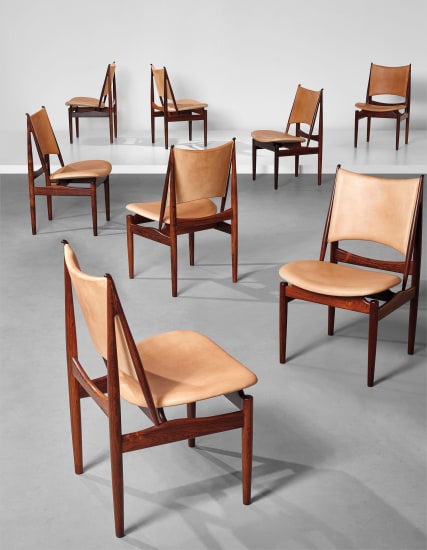
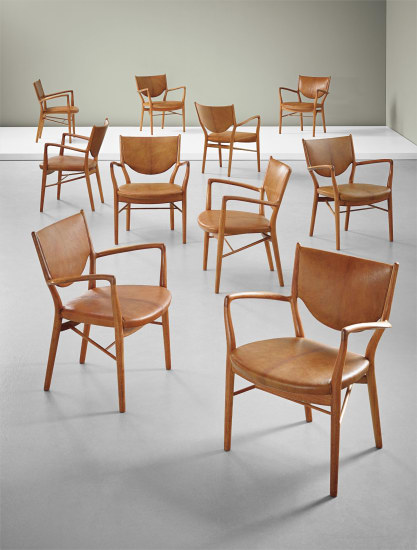
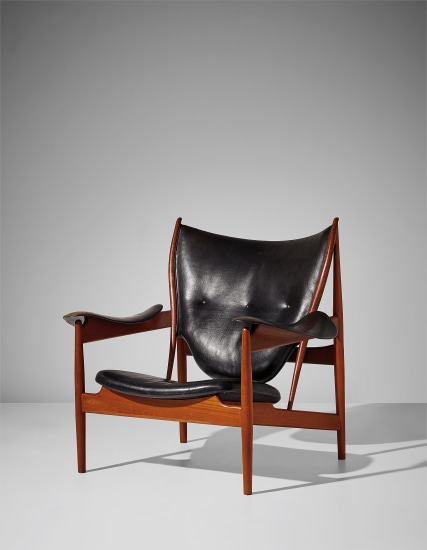
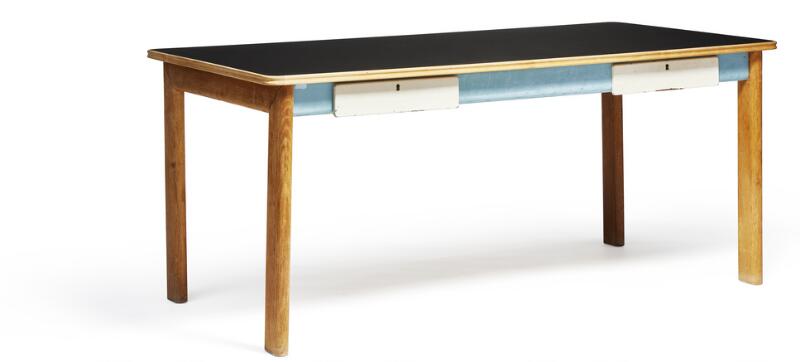
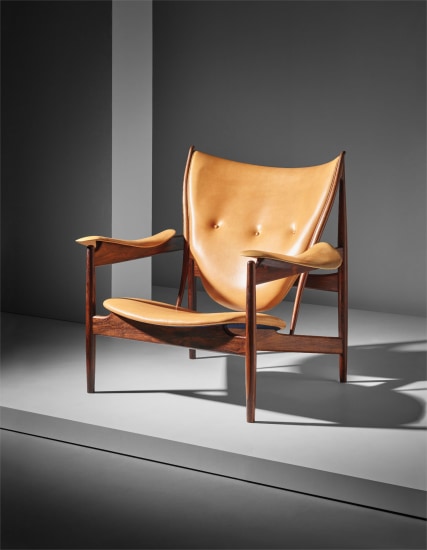
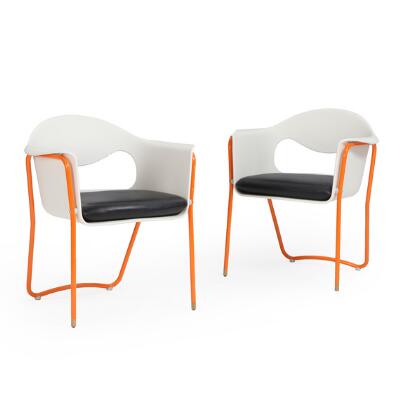


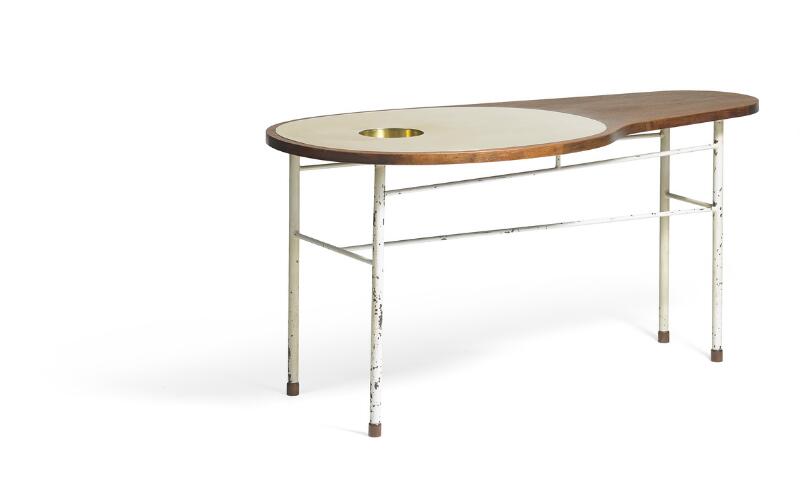



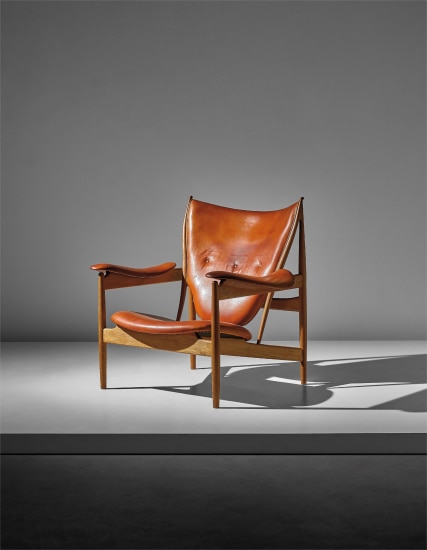
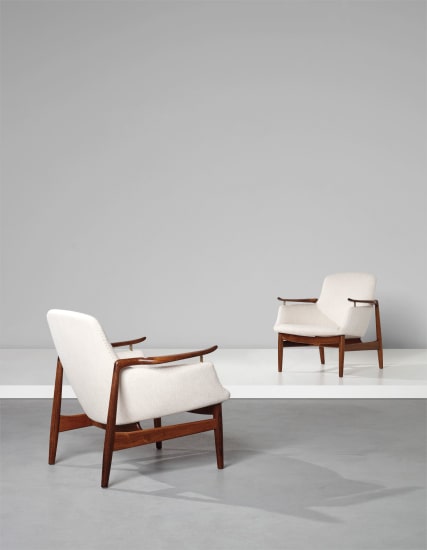
Try LotSearch and its premium features for 7 days - without any costs!
Be notified automatically about new items in upcoming auctions.
Create an alert